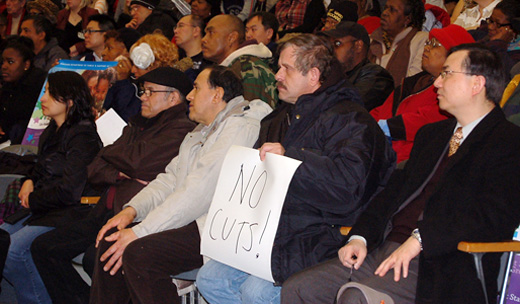
According to “Reading the Tea Leaves: Understanding Tea Party Caucus Membership in the U.S. House of Representatives,” authored by University of Maryland researchers Bryan T. Gervais and Irwin L. Morris, the tea party may not be what it pretends to be.
Gervais and Morris argue that the caucus is important in understanding the tea party movement more broadly, writing, “Currently, because the caucus is the only true institutional representation of the tea party in the federal government, it is fundamental to understand what proclivities are behind its membership.”
The House members who join the caucus are right-wing Republicans who represent well-off districts. However, the authors argue, joining such a caucus carries a political risk, and “[f]or a member to join the caucus, certain conditions must exist in the member’s district, or the move would not be beneficial. Our goal has been to elucidate those conditions.”
According one popular narrative, the rise of the tea party was fueled by the rage of white workers hurt by the nation’s failing economy, who, in turn, took out their anger on Washington and government in general.
Supposedly at the behest of these fuming white grassroots voters, the tea party became a national player, pushing Rep. Michelle Bachmann, R-Minn., along with 51 of her Republican Congressional allies, to form the Tea Party Caucus in Congress in 2010.
“Our analysis,” the researchers write, “strongly suggests that voters’ ‘anger,’ which is widely presumed to drive the movement, is not so much a reaction to desperate economic circumstances but a reaction to government spending in response to the economic downturn.”
While the tea party acts as a Republican caucus, the data shows that the higher the rate of unemployment in any district, the less likely its representative is to join. Districts with lower unemployment rates even in times of economic hardship are likely to be some of the wealthiest in the country. Therefore, they do not benefit as much from continued and increased government spending, though they may pay for some of it.
What, then, is the Tea Party Caucus?
According to the authors, it is “a collection of Republican members who tend to be more fiscally conservative than the average Republican and tend to be from prosperous congressional districts.”
The study appears in the current issue of P.S.: Political Science and Politics, published by the American Political Science Association.
Photo: At a protest against cuts in LIHEAP, the energy assistance program for low income households, a federal social services program. Protestors suggested cutting the military budget and reversing tax cuts to the wealthiest corporations and individuals in the name of “shared sacrifice.” PW










